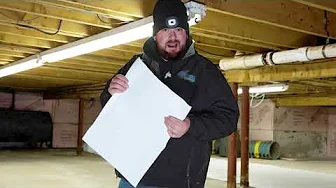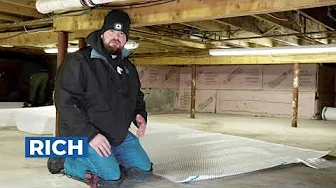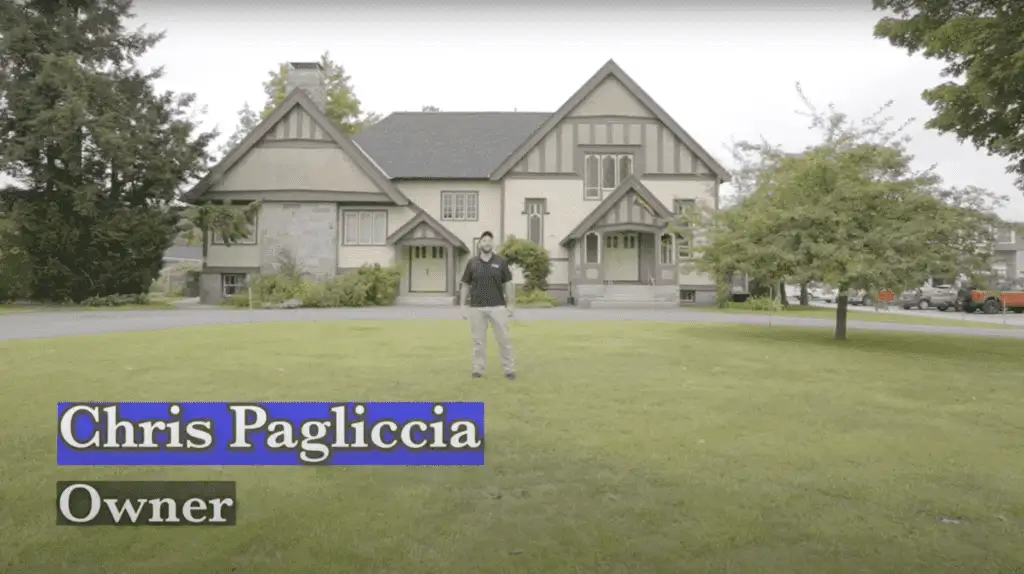Foundation Crack Repair Lexington MA
Foundation issues can lead to costly repairs and structural worries if left untreated. Cracks in a foundation may signal larger problems that require immediate attention to prevent long-term damage. Homeowners in Lexington, MA, often face this challenge, especially given the region’s weather conditions and soil composition. Understanding foundation cracks and knowing how to address them is essential for maintaining your home’s value and safety.
Real People - Real Great Results
Crawl Space Video Playlist
Common Causes of Foundation Cracks
Cracks in your foundation don’t just appear out of nowhere—they arise for specific reasons, often rooted in the environment and construction of your home. Understanding these causes can help you identify the issue early and address it effectively. Let’s break it down:
- Soil Movement: The ground beneath your home isn’t as stable as you’d like to think. In Lexington, MA, the soil is particularly prone to shifting because of seasonal changes. During wet periods, soil expands as it absorbs water, only to contract when things dry out. This constant push-pull exerts stress on your foundation, and eventually, cracks become inevitable. Soil’s instability is a silent culprit, working below the surface while you go about your day.
- Temperature Changes: New England weather isn’t known for being gentle. Lexington experiences everything from freezing winters to humid summers, and these fluctuating temperatures can wreak havoc on concrete. When exposed to extreme cold, concrete contracts; when it warms up again, it expands. This constant expansion and contraction creates tension, leading to cracks, big or small. While you can’t change the weather, understanding this process can keep you alert to its effects.
- Hydrostatic Pressure: Water is deceptively powerful. After a heavy rain or during periods of poor drainage, water can accumulate around your home. As it builds up, the moisture pushes against your foundation walls, creating a pressure known as hydrostatic pressure. Over time, this force overpowers the wall’s capacity to resist. The result? Cracks. Sneaky as it may seem, controlling water flow around your home can go a long way in avoiding this issue.
- Poor Construction: Sometimes, the problem starts before you even move in. If your home’s foundation was built using subpar materials or rushed construction practices, its integrity could already be compromised. Poorly mixed concrete, insufficient reinforcement, or a lack of attention to soil conditions can result in a foundation that struggles to handle the stresses it faces over time. Think of this as a weak foundation that struggles to keep the house above it stable.
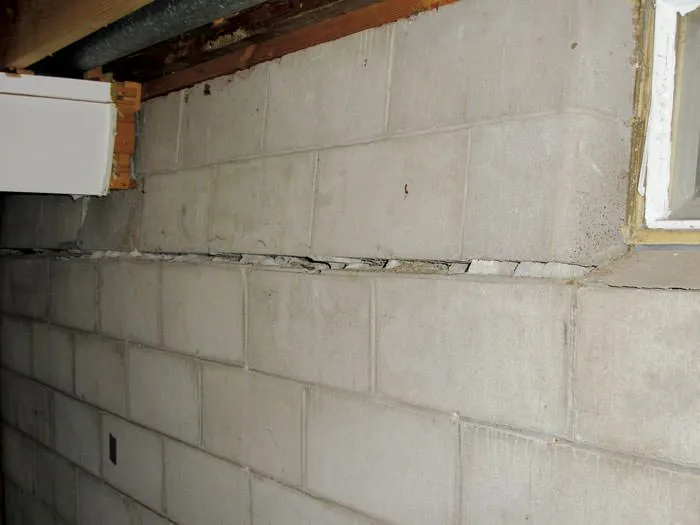
- Settling of the Structure: Every house settles—that’s just part of the aging process. But not all settling is harmless. While small, almost imperceptible shifts are normal, significant settling can cause the foundation to crack as the structure adjusts to changes in weight distribution and soil consistency. Cracks caused by settling often appear vertical, but they can worsen if left unchecked.
Foundation cracks tell a story, and most of the time, that story involves several of these culprits working together. Knowing what caused the issue in the first place is the first step to preventing it from becoming a bigger problem. And in Lexington, where the environment is an unrelenting factor, vigilance is key.
Types of Foundation Cracks
Foundation cracks come in various forms, each telling a different story about the forces at play beneath and around your home. Identifying the type of crack is the first step in determining its seriousness and the appropriate course of action.
- Horizontal Cracks: These are the heavy hitters of foundation damage, often signaling significant trouble. Horizontal cracks typically result from hydrostatic pressure—when water builds up in the soil around your foundation—or shifting soil. Both forces push against the foundation walls, sometimes overwhelming their structural limits. Any horizontal crack, no matter how small, should raise a red flag. Professional assessment and immediate attention are generally required, as these cracks can compromise the stability of the entire foundation.
- Vertical Cracks: Vertical cracks are the most common and often the least alarming. They usually result from natural settling over time or concrete shrinking slightly as it cures. These cracks are fairly narrow and run straight up and down, posing little threat if they remain slim (less than 1/8 inch) and stable. However, any signs of widening can indicate a more pressing issue, such as uneven settling or water intrusion. Monitor these closely and consider preventative measures as needed.
- Diagonal Cracks: Diagonal cracks have attitude—they run at a slant, often forming when one side of the house settles more than the other. Unlike vertical cracks, diagonal cracks have the potential to widen unevenly, creating structural stress points. The angle often hints at the cause: cracks that slope toward a corner suggest uneven soil underneath. Depending on their severity and growth, these can range from minor annoyances to serious structural alarms that require professional intervention.
- Hairline Cracks: Think of hairline cracks as the paper cuts of foundation issues: tiny but not always harmless. They’re usually the result of the foundation curing process or minimal stress during early stages of the home’s life. While most hairline cracks are inconsequential, dismissing them outright is a mistake. Left unchecked, even a minor crack can become a gateway for water intrusion or signal a larger problem waiting to rear its head.
Understanding these different types of cracks helps you gauge their potential impact, giving you a clearer sense of when it’s time to call in reinforcements—or just keep a sharper eye on things. Knowledge is power when it comes to safeguarding your home, and every crack tells a part of the story.
How To Identify When Repairs Are Needed
Not all foundation cracks are created equal, and knowing when to act can save you from spiraling repair costs. Here’s the rule of thumb: if the crack raises an eyebrow or makes you squint, it’s probably time to take a closer look.
Cracks that grow larger over time are a clear red flag. Foundations don’t heal themselves—if a crack is widening, it’s a sign that underlying stressors, like shifting soil or structural settling, are still active. Monitor these cracks over weeks or months. If your measuring tape tells you it’s growing, call someone.
For cracks wider than 1/8 inch, don’t shrug it off. That’s the moment they cross from “meh” into “might be a problem.” Hairline cracks might not need much besides monitoring, but once they hit that width, they can signal something more serious lurking below.
If water starts leaking through a crack, you’ve got a two-in-one problem: structural weakness and potential water damage. Moisture isn’t just bad for the foundation—it can lead to mold, rotted framing, and an evolving list of other expensive headaches. That’s not a wait-and-see scenario; it’s a “get it fixed now” situation.
Watch those foundation walls for bulging or bowing. If they’re no longer straight, that’s a big problem—likely due to soil pressure or poor construction. Bulging walls are often accompanied by horizontal cracks, and they don’t go away without intervention.
Finally, pay attention to your home’s smaller cries for help, like doors or windows that suddenly refuse to open properly. This subtle shift can indicate that the foundation is moving enough to distort the frame of your home. It might not look like a big deal at first glance, but it’s telling you that something beneath the surface isn’t right.
Bottom line: if the signs are there, don’t gamble. Treat your foundation like the spine of your home—it’s not something you want breaking while hoping for a miracle.
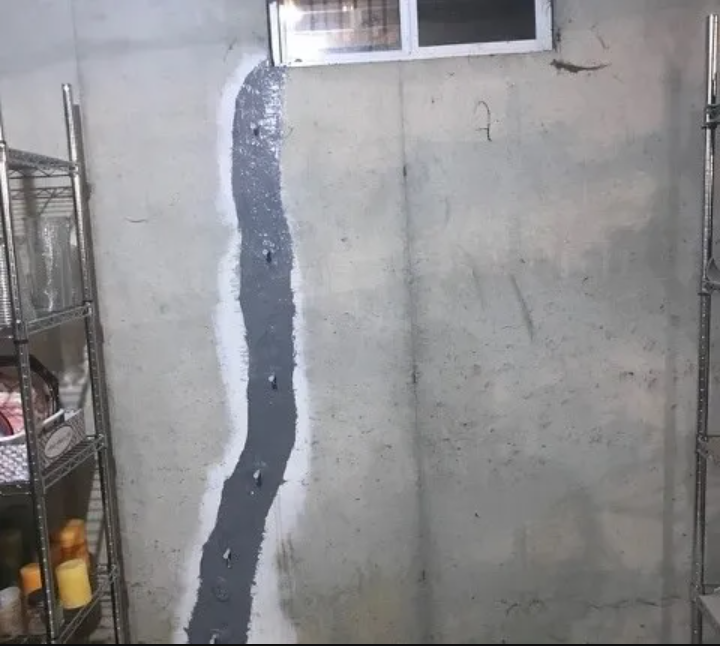
Foundation Crack Repair Methods
When it comes to repairing foundation cracks, the approach depends on the type, size, and underlying cause. Each method comes with its own strengths and is best suited to specific situations. Below, we outline some of the most effective techniques used to tackle foundation cracks in Lexington, MA.
- Epoxy or Polyurethane Injection: For small to medium-sized cracks, epoxy or polyurethane injections are often the first line of defense. The process involves injecting a liquid material directly into the crack, where it hardens and forms a watertight seal. Epoxy is ideal for restoring structural integrity, while polyurethane is better for filling cracks in foundation walls exposed to moisture. This method works best on non-moving cracks and is popular for its efficiency and relatively low cost.
- Carbon Fiber Reinforcement: Horizontal or wide cracks caused by soil pressure or structural shifting require reinforcement. Carbon fiber strips are applied to the foundation wall to brace and stabilize it. These strips act like splints, distributing pressure evenly and reducing the likelihood of further cracking. The process is minimally invasive and highly effective for preventing future damage, particularly for homes with bowing or bulging walls.
- Exterior Waterproofing: If cracks are linked to excessive water pressure, exterior waterproofing is a proactive solution. This involves excavating around the foundation and applying a waterproof membrane to the exterior walls. The barrier prevents water from seeping into the cracks while protecting the foundation from moisture-related deterioration. Although more labor-intensive and costly, this method is a long-term fix for water-related issues.
- Piering or Underpinning: For severe structural problems caused by settling or shifting, piering or underpinning offers a more robust solution. Piers are driven deep into stable soil layers below the foundation, essentially lifting and re-stabilizing it. This method addresses the root cause of the movement and provides lasting stability, though it’s typically reserved for the most serious foundation issues due to its complexity and cost.
- Regrading and Improved Drainage: Sometimes, the best fix starts outside the home. Poor drainage can lead to water pooling near the foundation, which amplifies hydrostatic pressure and contributes to cracks. Regrading the landscape to slope away from the foundation or installing effective drainage systems, such as French drains, can alleviate this pressure. While it won’t fix existing cracks, it’s an essential step to prevent new ones from forming.
Each of these repair methods has its place, but identifying the right approach often requires professional evaluation. The combination of New England’s challenging weather and Lexington’s unique soil conditions means that a tailored solution is critical for lasting results. By addressing both the symptoms (cracks) and the causes (soil movement, water pressure), you can safeguard your home’s foundation for years to come.
Preventing Foundation Cracks
Foundation cracks may be inevitable to some degree, but preventative measures can go a long way in minimizing their occurrence and severity. A proactive approach can protect your home’s structural integrity while saving you money in future repairs.
- Maintain Proper Drainage: Your foundation’s worst enemy is water. Redirect downspouts and gutters to discharge water at least five to ten feet away from your home. If your yard slopes toward the foundation, that’s a problem—fix it with a re-grading effort or install French drains to steer water away. Sump pumps, particularly in high-water-table areas like parts of Lexington, MA, can also be a game-changer in keeping things dry.
- Address Plumbing Leaks: A hidden plumbing leak under or near the foundation can slowly escalate into a significant issue. Regularly inspect for damp spots in your basement or unusually lush patches of grass around your home; these can signal water where it doesn’t belong. Fix leaks as soon as they’re detected to avoid consistent moisture exposure that weakens concrete over time.
- Control Vegetation Growth: That picturesque tree you planted too close to the house might look great today, but its roots could spell trouble for your foundation in the future. Over time, roots can exert pressure on the soil around your foundation or create pathways for water infiltration. Stick to shallow-rooted plants near your home or consider creating a root barrier for existing vegetation.
- Schedule Routine Inspections: Nobody gets excited about crawling around a basement looking for cracks. But making time for periodic inspections—maybe once a season—is far less painful than the bills that come with major structural fixes. Use a flashlight and pay attention to corners, around window wells, or anywhere water likes to gather. The earlier you spot an issue, the easier it is to resolve.
- Alleviate Soil Pressure: Lexington’s weather swings and varying soil types mean soil pressure is always a concern. If your home is built on clay-heavy soil, expect it to expand with moisture and shrink in dry spells. You can dig yourself out of this cycle (sometimes literally) by hiring a professional to evaluate soil pressure and potentially stabilize it using methods like chemical injections or organic material amendments.
By sticking to these basic maintenance steps, you’ll significantly lower the risk of costly foundation issues down the road. Prevention may not be glamorous, but it’s far easier than dealing with the aftermath of unchecked damage.
Hiring a Professional in Lexington, MA
DIY foundation crack repairs might seem tempting, but when it comes to something as critical as your home’s structural integrity, it’s best to bring in the pros. A professional foundation contractor will not only assess the cracks but also diagnose the underlying causes—whether it’s soil movement, hydrostatic pressure, or structural settling. This isn’t just about sealing a crack; it’s about ensuring the problem doesn’t come back to haunt you later.
In Lexington, MA, hiring a contractor familiar with the region’s unique challenges—like freeze-thaw cycles and clay-heavy soils—is crucial. Local professionals understand these variables and can recommend solutions that are tailored to your home. Whether it’s injecting epoxy to strengthen a crack, reinforcing with carbon fiber, or undertaking larger-scale underpinning, having an expert in your corner can make all the difference.
Before hiring, do your homework. Look for contractors with solid reviews and a proven track record in foundation repair. A good contractor will provide a clear assessment, detailed plan, and transparent pricing. Cutting corners might save you cash up front, but it could cost you exponentially more in the long run. Your foundation isn’t the place to gamble—get local expertise and fix it right the first time.

The Long-Term Impact of Delaying Repairs
Foundation cracks are like the warning lights on your car dashboard—ignore them, and things tend to spiral. Delaying repairs may seem like a money-saving strategy today, but it often leads to compounded problems tomorrow. Here’s a breakdown of what can happen when you kick the can down the road:
- Escalating Repair Costs: That small crack you could fix with a simple epoxy injection? Leave it unchecked, and it can morph into a full-blown structural issue. When foundation problems worsen, so do the repair bills. What starts as a few hundred dollars can quickly escalate to thousands if piers, underpinning, or wall reinforcements become necessary.
- Water Damage and Mold: Cracks invite water, plain and simple. Once moisture starts seeping into your basement or crawl space, the drama unfolds: mold growth, wood rot, and the potential for respiratory health issues. Water doesn’t just destroy walls and floors—it creates an environment that can turn your home into a petri dish.
- Structural Integrity Compromised: As cracks widen or multiply, the structural stability of your home takes a hit. Foundation issues can lead to uneven floors, bowed walls, and misaligned doors and windows. These aren’t just annoying quirks—they’re symptoms of a home that’s struggling to stand strong.
- Loss of Property Value: A foundation problem is red-flag territory for potential buyers. Even small, unrepaired cracks can devalue your property significantly or scare away buyers entirely. Worse yet, if the damage is extensive, selling may not even be an option until repairs are complete.
Bottom line: Foundation problems don’t fix themselves. The longer you wait, the more complex—and expensive—the solution becomes. Acting quickly isn’t just about protecting your wallet. It’s about maintaining the safety, comfort, and long-term value of your home. Handle the crack while it’s still a crack, not a crater.
Conclusion
Foundation cracks aren’t just cosmetic annoyances; they’re early warning signals that your home may be under stress. For homeowners in Lexington, MA, where unpredictable weather and shifting soils are a fact of life, recognizing and addressing these cracks can mean the difference between a quick fix and a financial headache. The key takeaway? Don’t gamble with delays.
By staying informed about the causes and types of foundation cracks, you can approach them with confidence rather than uncertainty. Routine inspections and preventative measures—like maintaining drainage or reinforcing vulnerable areas—can keep minor cracks from escalating into structural crises.
When repairs are needed, they’re best left to experienced professionals who understand the unique challenges of Lexington’s climate and ground conditions. Whether it’s a straightforward epoxy injection or a more involved underpinning job, the sooner you act, the fewer surprises you’ll face down the road.
Your home is your biggest investment. Give its foundation the attention it deserves. A small crack today can grow into a big problem tomorrow, but with proactive care, you can keep your home safe, stable, and standing tall for years to come.
Reviews from Happy Customers
Our top priority is customer satisfaction, and we work closely with clients to understand their unique needs and goals.




